
Sponsors: Sugar House Chapter Sons of Utah Pioneers and Emigration Canyon Historical Society, 2012
Location: Mouth of Emigration – Rotary Glen Park
There are five plaques associated with this monument:
Native People
In the beginning, nature appears to have made every effort to conceal this sacred place. Yet soaring above, the eagle has known of it since creation.
Thousands of years before this land was called America, Native Americans saw many uses for this respected canyon. The Ute, known as, People of the Land of the Sun or People of the Mountains considered this canyon a place of Great Power. To the west, the Salt Lake Valley was acknowledged as the Land of Peace between Nations. The Ute, Goshute, Navajo, Paiute & Shoshoni gathered food in the valley for the winter months.
Where we now walk there are stones we step upon, paths we follow, hills and mountains we climb, perhaps with thought only of our own journey. How often we hear, or say, how far we’ve walked, run or ridden. Look back 300 years, 600, a thousand – and more. The native people who lived and labored up and down this canyon were following game and foraging for food.
They were families living here. Each member was celebrated – from the elder sharing stories and wisdom, to a father’s successful hunt and a mother who taught what plants could be eaten or used as medicine. There was the joy of a birth. Small ones, who survived, were treasured children among them.
Those whose ancestors have arrived in the last few centuries, would do well to remember that we stand on land which was first respected, appreciated, loved and understood as beloved Mother Earth.
If we too, are to have future generations who look back and honor us, and this place, we must assist and value each other, our families and our near and distant communities.
May this place serve as a reminder that earlier visiting people passed where you now stand, with the acute awareness that they were treading on the sacred land of the Ute Nation.
Now we walk here. Let us walk with respect
This Monument is dedicated to the people of the Ute Nations
See other historic markers in the series on this page for SUP Markers.
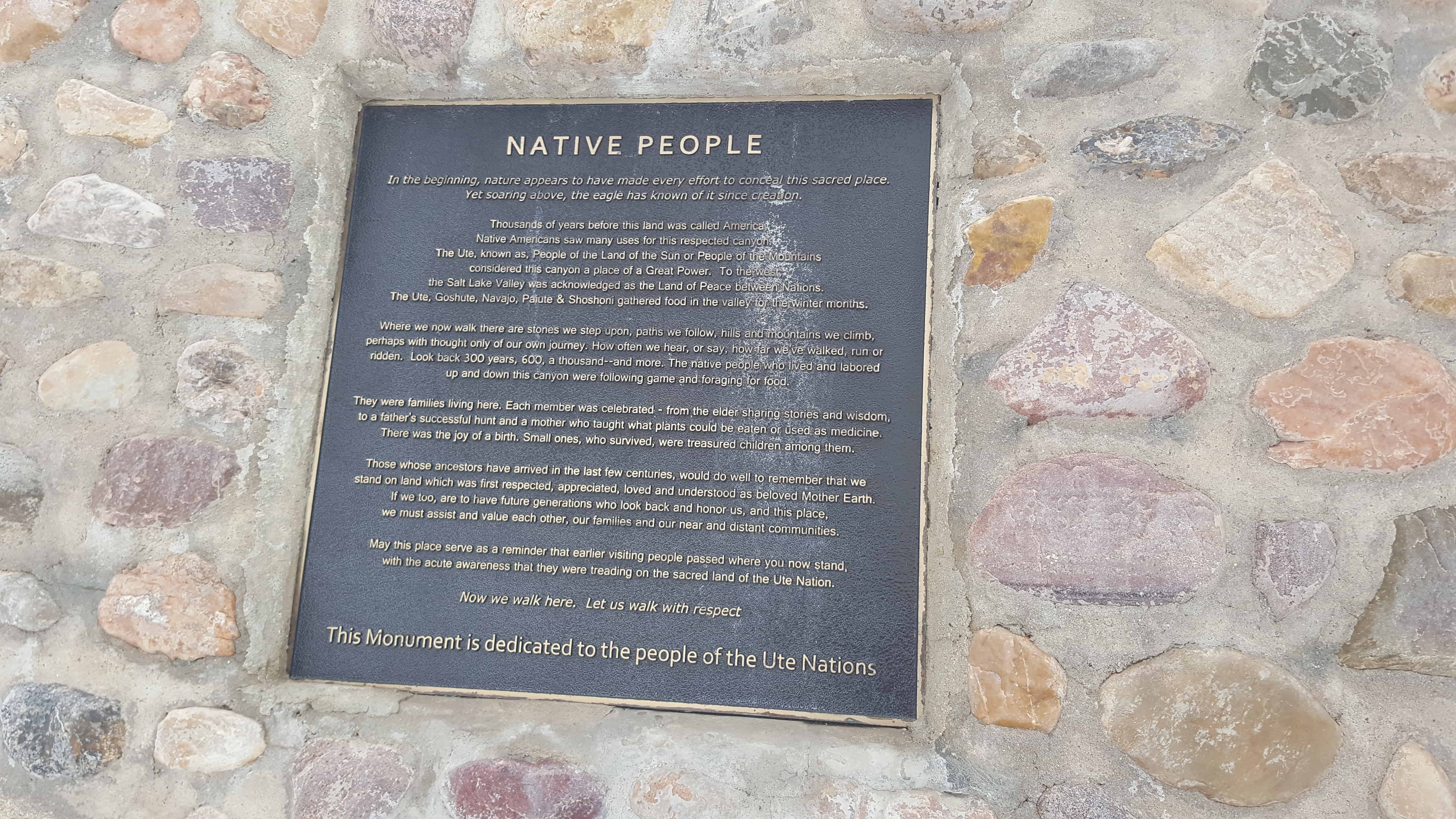
DONNER-REED PARTY
“There are mental struggles which so absorb the being and soul that physical terror or tortures are unnoticed.” – C F McGlashan 1879
There are 27 canyons on the Eastern Bench of the Salt Lake Valley. Only two of which have an entrance and exit: Emigration Canyon and Parley’s Canyon to the south. For this reason, the Donner-Reed party made its way down this canyon. Eighty-seven men, women, children and 23 covered wagons were encouraged by the advice of Lansford W. Hastings and his suggestion of a shortcut westward to California of almost 400 miles.
Spending three weeks cutting a road to East Canyon, over Big Mountain and Little Mountain, the group arrived at this spot on August 22, 1846. From here, they set out for the mountains of Sierra Nevada not reaching them until November. High in the mountains, they became trapped by early, heavy snowfall, and their food supplies ran low. Stranded until help arrived in February 1847, some emigrants resorted to cannibalism to survive, eating those who had succumbed to starvation and sickness. Only 48 survived to reach California. It was one of the most spectacular tragedies in western migration.
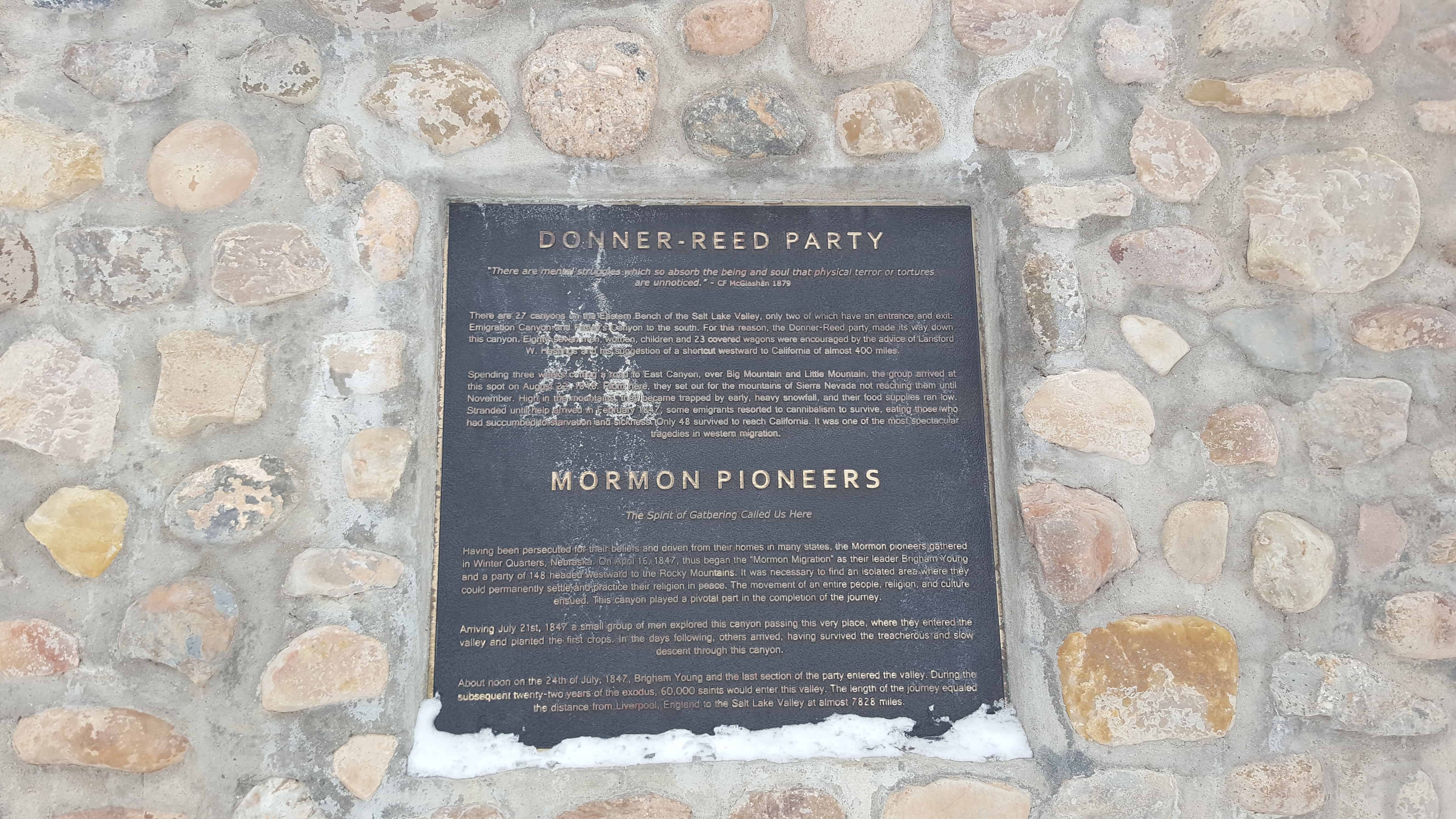
MORMON PIONEERS
The Spirit of Gathering Called Us Here
Having been persecuted for their beliefs and driven from their homes in many states, the Mormon pioneers gathered in Winter Quarters, Nebraska. On April 16, 1847, thus began the “Mormon Migration” as their leader Brigham Young and a party of 148 headed westward to the Rocky Mountains. It was necessary to find an isolated area where they could permanently settle and practice their religion in peace. The movement of an entire people, religion, and culture ensued. This canyon played a pivotal part in the completion of the journey.
Arriving July 21, 1847 a small group of men explored this canyon passing this very place, where they entered the valley and planted the first crops. In the days following, others arrived, having survived the treacherous and slow decent through this canyon.
About noon on the 24th of July, 1847, Brigham Young and the last section of the party entered the valley. During the subsequent twenty-two years of the exodus, 60,000 saints would enter this valley. The length of the journey equaled the distance from Liverpool, England to the Salt Lake Valley at almost 7828 miles.
EXPLORERS – TRAPPERS – TRADERS
Only Native Indians inhabited what is now Utah prior to the 1700s. The exploring party of Escalante and Dominquez traveled 1800 miles to arrive to the south at Utah Lake in 1776, but never entered the Salt Lake Valley. This Great Basin area was first claimed by the Spanish as a Mexican Territory until the Mexican War (1846-1848).
In the 1820s and 1830s, Mountain Men and Trappers led lives that were dangerous and often down right miserable. Some ended in attacks by Natives or grizzly bears. But, during their short time here, many explored the canyons and surrounding areas.
Among the first white traders along this Wasatch Range was Etienne Provost known as the “Man of the Mountains”. Jim Bridger reached this basin too by traveling in a bull boat along what he thought was an arm of the Pacific Ocean because of the Great Salt Lake’s salinity. Other notables were Jedediah Smith, Thomas “Broken Hand” Fitzpatrick, Morris “Black” Harris, and Milton and William Sublete, as well as many others.
In 1843, explorer John C. Fremont made a great contribution with his detailed book on this canyon and the Great Basin. Accompanying him were Kit Carson, Tom Fitzpatrick and mapmaker Charles Preuss. In 1849, Howard Stansbury surveyed this area again.
“Emigration is a gate to the Salt Lake Valley, veiled in obscurity, and unknown to the citizens of the United States” – Solomon Carvalho 1852

MODERN DAY CANYON USES
“We reached the end of the canyon where it looked as though our wagons would have to be abandoned” – April 23, 1857, Joel Hills Johnson
Emigration Canyon rises 1400 feet in less than four miles making it a very treacherous and difficult descent into the valley. In 1849-1851, the Gold Rush in California brought 30,000 “Forty-Niners” down this canyon trail.
Utah War (May 1857-July 1858) saw 2000 militia defenders, the nations largest & most experienced, rushing up this canyon eastward to defend the city as 3500 Army troops, one third of the US Army, made their way down this canyon to stop a supposed rebellion by the Mormons against the US Government.
The Overland Freight and Mail services navigated this pass from 1849 until 1858. The Stage Coach era started in 1858, followed by the Pony Express Mail system in 1860-1861.
The first continental telegraph was connected on October 24, 1861 via a link which came down this canyon to Salt Lake. The first telegram sent by Governor Brigham Young to President Abraham Lincoln stated: “Utah has not seceded but is firm for the Constitution & laws of our once happy country”
The Canyon changed drastically in 1869 with the completion of the first Transcontinental Railroad at Promontory Point, Utah. This canyon then ceased to be the main gateway to the west.
(Note: The rail lines were joined at Promontory Summit, Utah, 50-miles north of Promontory Point, Utah.)
Laws enacted in 1869 led to development by farmers, ranchers and miners. It still has the largest number of residents of any canyon on the east bench. In 1873, the first wooden stave pipes carried water from this canyon to the city below.
Sheep-herders by the thousands used this canyon as a conduit to the surrounding mountains for grazing of the sheep.
Pioneers, craftsmen and laborers now quarried limestone, sandstone and timber from the canyon using the small gauge railroad from 1907-1917 to ferry goods & visitors in and out of the canyon.
This canyon boasted hotels, dance halls, a brewery, restaurants, religious retreats, stores, sundries and canyon grown vegetables & fruit. The first snow lifts wer installed; two ice skating rinks, even a golf course … all now long gone. Bikers, hikers and those who love the mountains now enjoy this historic canyon.
“The footsteps of thousands have marked the pathway of this historic canyon.” Robert W. Race & Stanley A. Fishler

HISTORIC EMIGRATION CANYON MONUMENT
Robert W. Race, Project Chairman
Stanley A Fishler, Co-Project Chairman
Sugarhouse Chapter – Sons of Utah Pioneers
Emigration Canyon Historical Society
A list of donors are displayed on the plaque.
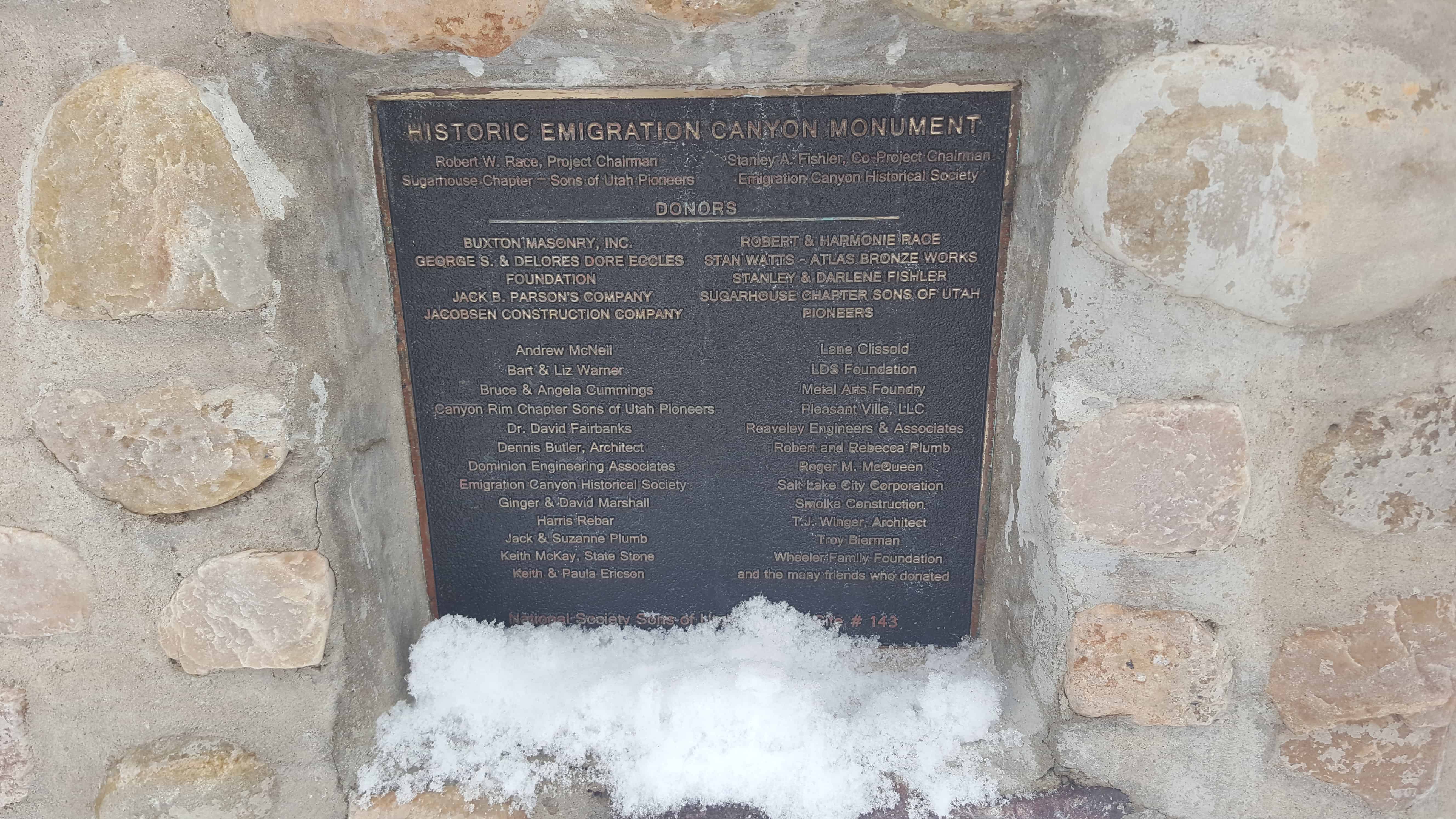

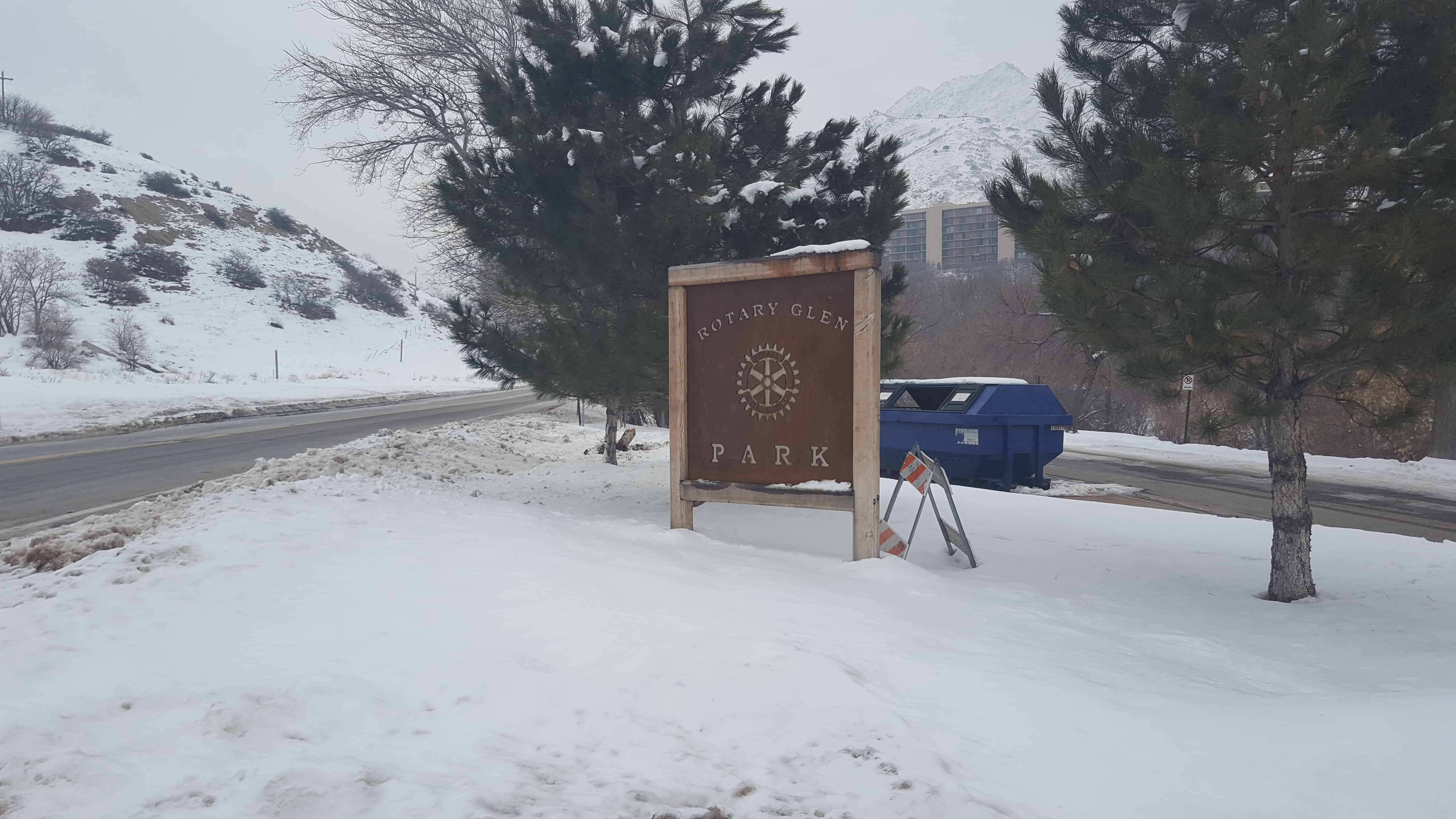


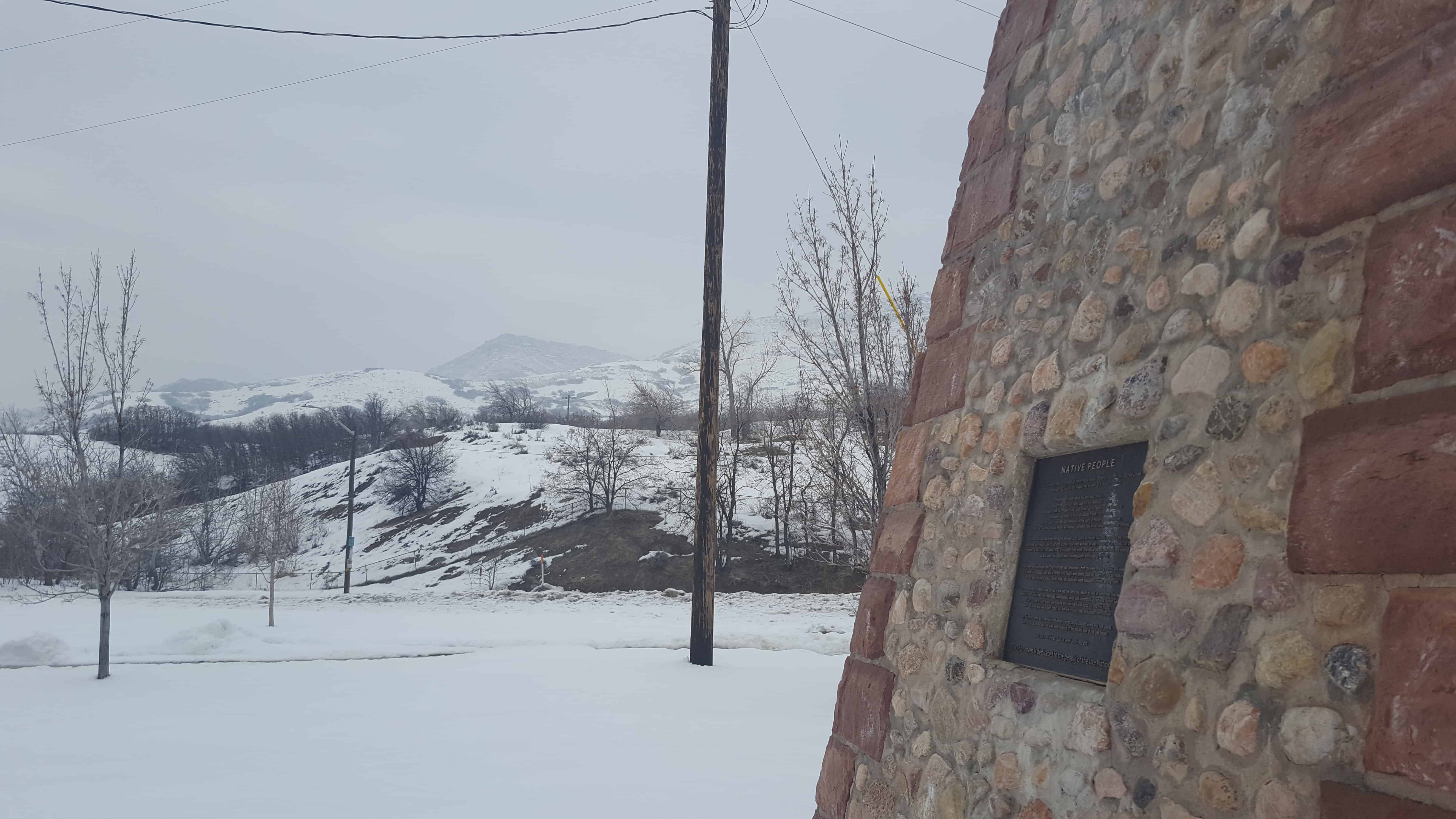



Pingback: Rotary Glen Park | JacobBarlow.com